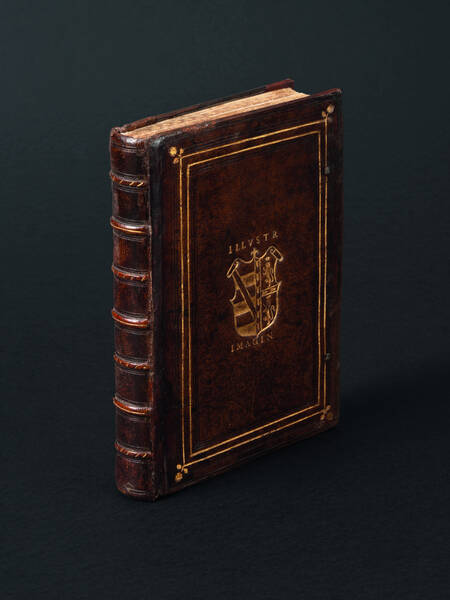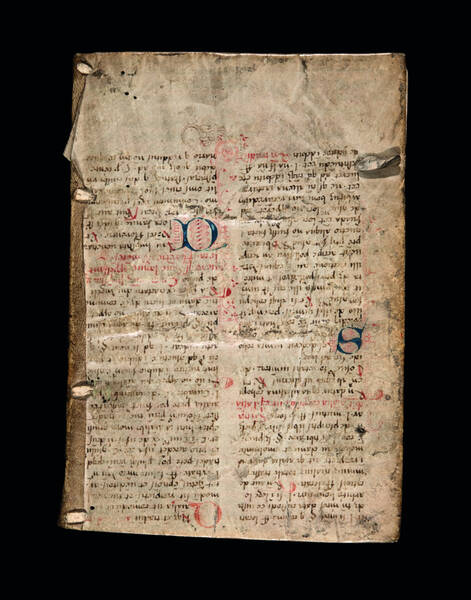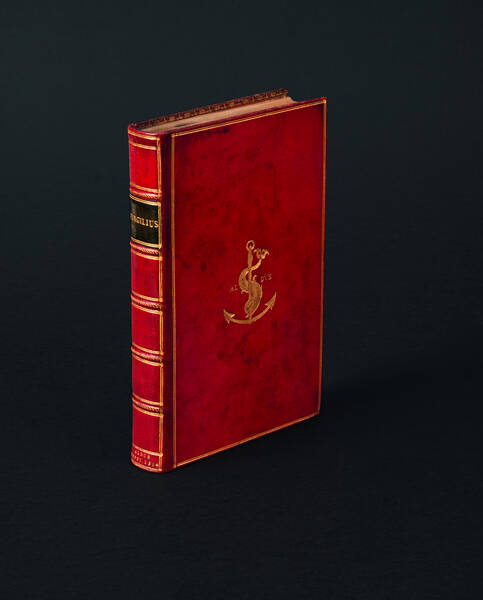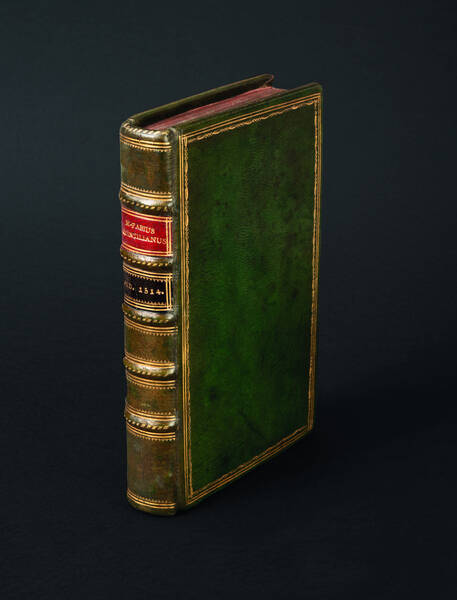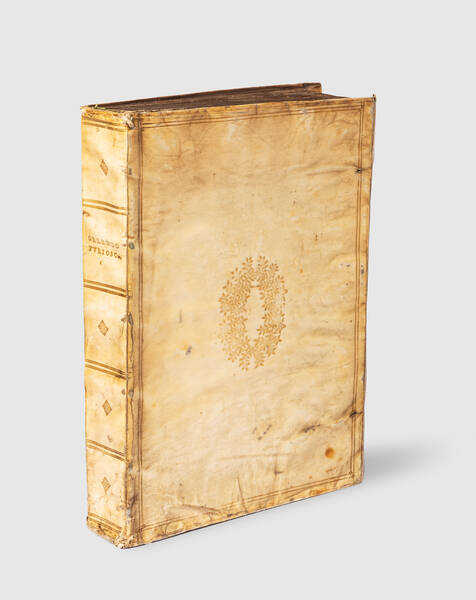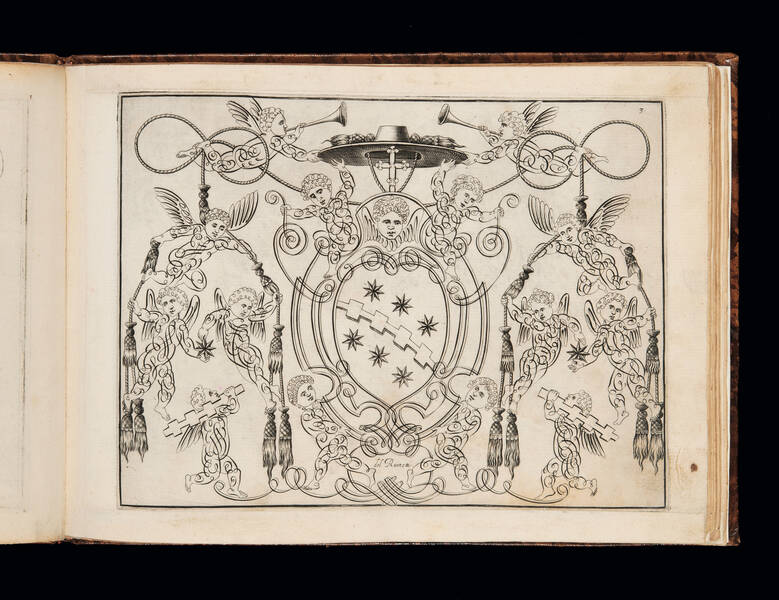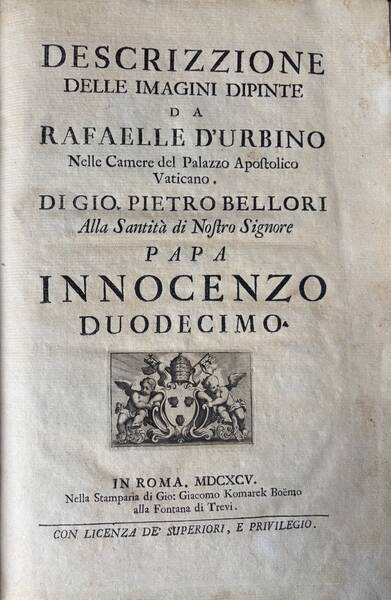[BIBLIA ARABICA]. Evangelium Sanctum Domini nostri Iesu Christi conscriptum a quatuor Evangelistis sanctis, id est Matthaeo, Marco, Luca et Iohanne.
Rome, Typographia Medicea., 1590 (-1591).Folio (352 x 240 mm.), 364 pages; “Arabic title preceding Latin. Double-rule border on title-page and each page of text. One hundred forty-nine woodcuts, by repetition of sixty-seven blocks, approximately 100 x 125 mm. Fourteen of these blocks are signed with the monograms of Antonio Tempesta as designer and Leonardo Parasole as cutter, and four other blocks have Parasole's signature alone. An early attribution of the “LP” monogram to Luca Penni is incorrect. […] Printed in Arabic throughout, with a colophon in roman letter. […] The Arabic types are those designed by Robert Granjon for Domenico Basa, and Granjon was employed by the Typographia as type designer in the last years of his life.” (Mortimer) A few leaves are browned, as usual, but a very fine copy, untrimmed in old paper wrappers, modern vellum protective chemise. Our copy is a duplicate from the Imperial Library in Paris with red stamps at the beginning and at the end and a release stamp dated 1874.
First edition of the Gospels in Arabic and first book printed by the Typographia Medicea.“… the Typographia Medicea often referred to as the Medici Oriental Press, operated in Rome between the last decades of the sixteenth century and the beginning of the seventeenth century under the patronage of Cardinal Ferdinando de' Medici, later Grand Duke of Tuscany from 1587. The press was established in 1584 by Ferdinando, supported by Pope Gregory XIII and directed by the Orientalist and mathematician Giovanni Battista Raimondi (1536-1614). The ultimate purpose of the Typographia Medicea was, in the Pope's mind, the printing of sacred and religious texts in Oriental languages that were to be disseminated throughout the Mediterranean and the Near East. Cardinal Ferdinando, on the other hand, considered the Oriental Press as an investment through which he could gain the commercial monopoly over the book trade throughout the Levant. However, his investment was to prove unsuccessful. The press never managed to produce substantial revenues, and the initial expenses were not covered by the sales: thousands of copies remained lying in the closets of Ferdinando's palace in Rome and later were moved to several Medici residences in Florence and Pisa. In spite of the financial failure, the cultural and scientific enterprise led by Raimondi achieved great results. The high technical skills of the craftsmen involved in the making of several Oriental types, together with Raimondi's exceptional linguistic and philological expertise, allowed the Typographia to produce editions of unprecedented quality. Moreover, Cardinal Ferdinando and Raimondi put together a library that remains an extant legacy for future generations, today constituting the core of the collection of the Oriental manuscripts now kept in the Biblioteca Medicea Laurenziana in Florence.” (M. Farina & S. Fani, The Typographia Medicea and the Humanistic Perrspective of Renaissance Rome. in: The Grand Ducal Medici and the Levant. Material Culture; Diplomacy, and Imagery in the Early Modern Mediterranean, edited by Maurizio Arfaioli and Marta Caroscio. 2016) Antonio Tempesta (1555 - 1630), Italian painter and engraver of the early Baroque era, was the author of the illustrations of both the editions of the Gospel in Arabic printed by the Typoraphia Medicea.
CNCE 5985; Adams B 1822; Mortimer 64; Darlow/Moule 1636; Schnurrer 318.
Other Books

ALIGHIERI, DANTE
La Divina Comedia Di Dante, di nuouo alla sua vera lettione ridotta con loaiuto di molti antichissimi esemplari. Con argomenti, et allegorie per...
SOLD OUT
PETRARCA, Francesco
Li Sonetti canzone e triumphi del Petrarcha con li soi commenti non senza grandissima euigilantia et summa diligentia correpti et in la loro primaria...
€ 9.000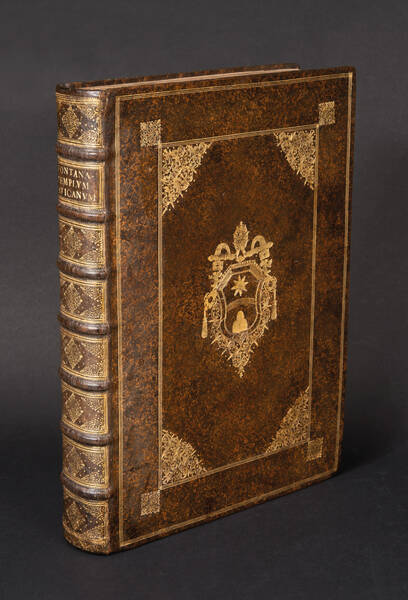
FONTANA, Carlo
Templum Vaticanum et ipsius origo cum aedificiis maximè conspicuis antiquitùs, & recèns ibidem constitutis; editum ab equite Carolo Fontana ... opus...
€ 38.000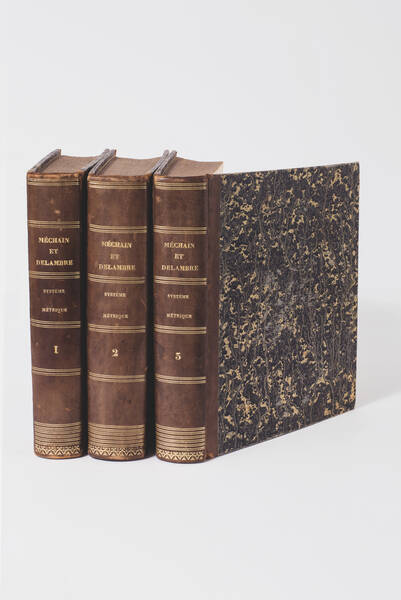
DELAMBRE, Jean-Baptiste-Joseph & MÉCHAIN, Pierre-François-André
Base du système métrique décimal, ou mesure de l'arc du méridien compris entre les parallèles de Dunkerque et Barcelone, exécutée en 1792 et années...
SOLD OUT
CONTILE, Luca
Ragionamento di Luca Contile sopra la proprietà delle imprese con le particolari de gli Academici Affidati et con le interpretationi et croniche.
€ 8.000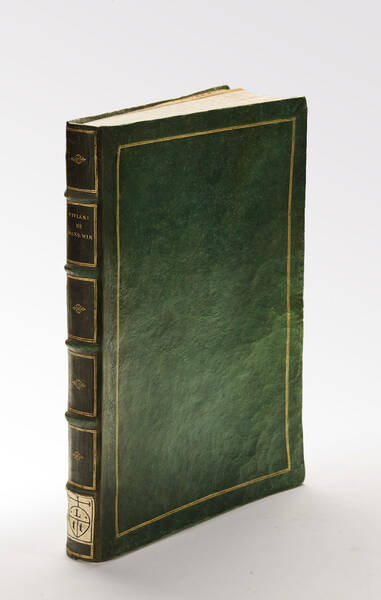
VIVIANI, Vincenzo
De maximis et minimus geometrica divinatio in quintum cononicorum Apollonii pergaei.
€ 8.000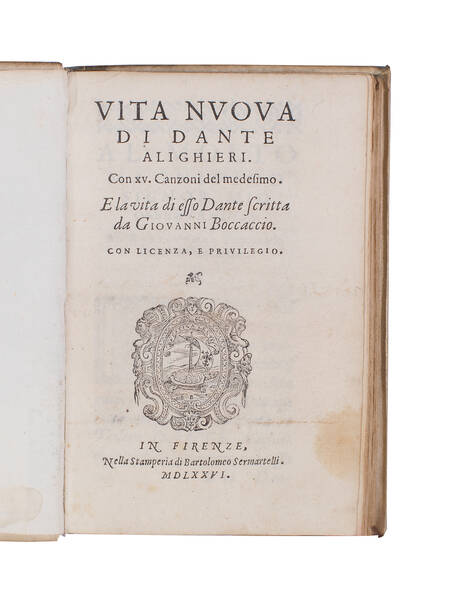
ALIGHIERI, Dante
Vita nuoua di Dante Alighieri. Con XV canzoni del medesimo. E la vita di esso Dante scritta da Giouanni Boccaccio
SOLD OUT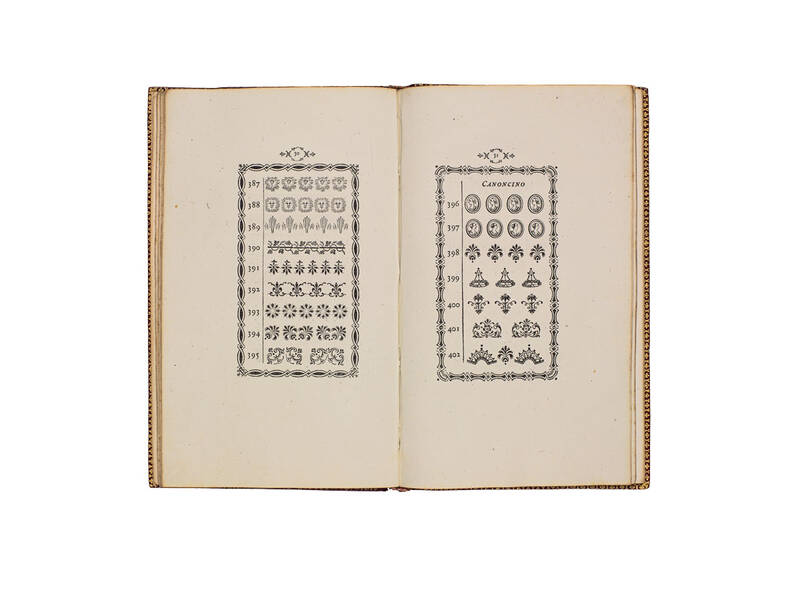
[BODONI]
Fregi e Majuscole incise e fuse da Giambattista Bodoni direttore della Stamperia Reale
SOLD OUT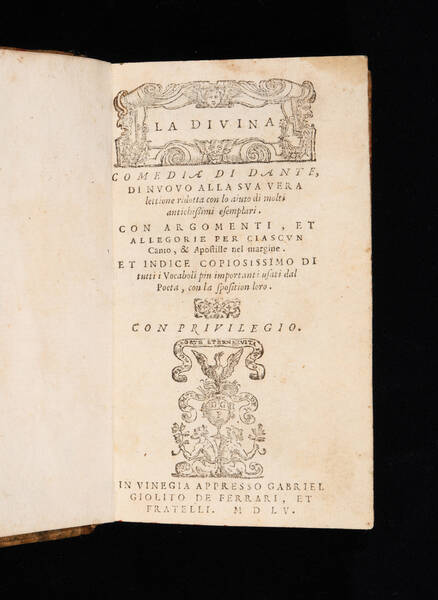
ALIGHIERI, Dante
La Diuina Comedia di Dante, di nuouo alla sua vera lettione ridotta con lo aiuto di molti antichissimi esemplari. Con argomenti, et allegorie per...
SOLD OUT![MORE, Sir Thomas. De optimo reip. statu deque nova insula Utopia ... Epigrammata [with:]DESIDERIUS ERASMUS. Epigrammata. MORE, Sir Thomas. De optimo reip. statu deque nova insula Utopia ... Epigrammata [with:]DESIDERIUS ERASMUS. Epigrammata.](https://www.medariquier.com/typo3temp/pics/9344bb41f5.jpg)
MORE, Sir Thomas; DESIDERIUS ERASMUS
MORE, Sir Thomas. De optimo reip. statu deque nova insula Utopia ... Epigrammata [with:] DESIDERIUS ERASMUS. Epigrammata.
€ 50.000![Tragoediae septem cum commentariis. [Greek] Edited by Johannes Gregoropoulos Cretensis]. Tragoediae septem cum commentariis. [Greek] Edited by Johannes Gregoropoulos Cretensis].](https://www.medariquier.com/typo3temp/pics/a7f4ddada3.jpeg)
SOPHOCLES
Tragoediae septem cum commentariis. [Greek] Edited by Johannes Gregoropoulos Cretensis].
SOLD OUTMEDA RIQUIER rare books ltd.
4 Bury Street St James's
SW1Y 6AB London
Phone +44 (0) 7770457377
info@medariquier.com
